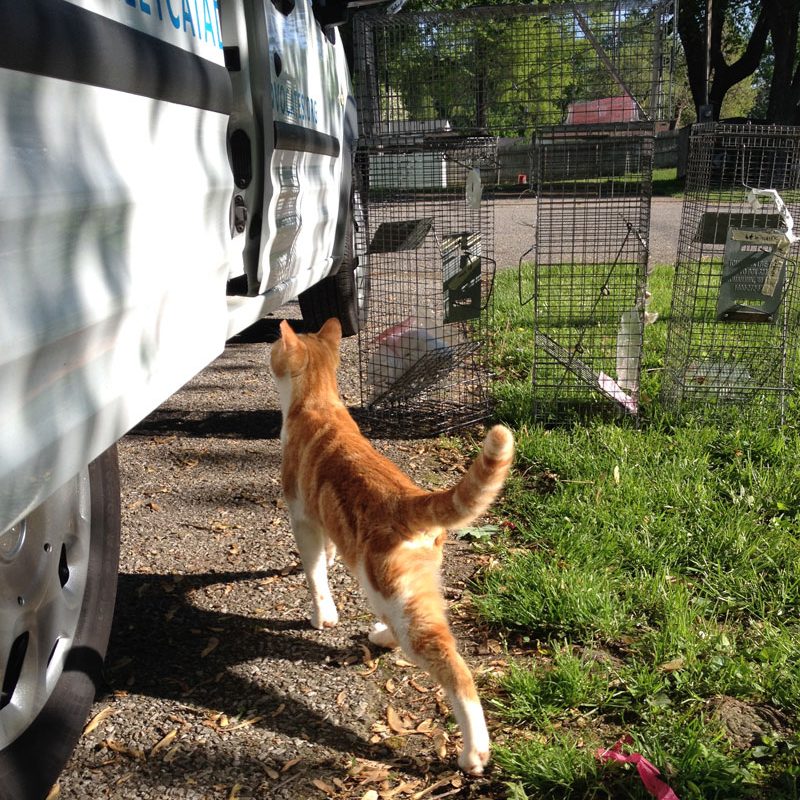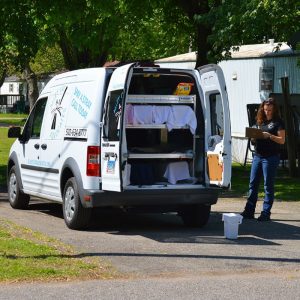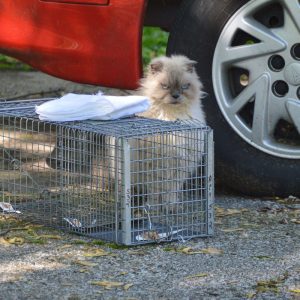
Interview! Part 1 – Dr. Sara Pizano, Veterinarian and Animal Welfare Consultant
May 5, 2018
Interview! Part 2 – Dr. Sara Pizano, Veterinarian and Animal Welfare Consultant
May 12, 2018
 I want to first go on the record and say that I am not an expert in transporting cats and kittens around the country. I have never participated in an out-of-state transport of cats, and I will admit that I was always pretty adamant about helping the cats and kittens in our own back yard, if not through rescue and adoption, then through community awareness programs.
I want to first go on the record and say that I am not an expert in transporting cats and kittens around the country. I have never participated in an out-of-state transport of cats, and I will admit that I was always pretty adamant about helping the cats and kittens in our own back yard, if not through rescue and adoption, then through community awareness programs.
But I digress. Over the last several years, as many shelters are operating in what I call “kitten-free zones,” they can assist other areas with cats and kittens. When I worked with the Merrimack River Feline Rescue Society, we were first happy to bring in kittens and friendly adult cats from other areas, but as those sources dried up, we began — and continue — to take in many special needs cats. Many shelters and adoption programs still limit the disposition of cats that are coming into their facilities. I have heard many times, “There is no way we can fill up our shelter with unadoptable cats and kittens and that is why we have to turn them away.” I challenge groups who feel this way to try to do just that and see what happens. You may need to continue your fee-waived adoption programs, use your community clinics to assist some chronic disease issues with cats or do a “care for life” program. But I don’t believe your building with be overrun with cats and kittens. You will find options and placement for these cats and your community will be most thankful for the help.
 Once you have fully provided assistance to the cats in your community, then I am beginning to believe that transport should be considered. What is transport 2.0? Transport is more than just taking cats and kittens from a specific organization — it is more of an operational partnership. So the sending organization is going to need to commit to receiving mentoring from the receiving organization. The receiving organization is going to need to commit to provide funding for community cat spay/neuter (TNR and owned low cost), or at a minimum offer fundraising mentorship to help the sending organization grow. Together these bonded organizations will have wins and losses. Together these organizations will share statistics and take ownership of bothshelters’ statistics. Ideally, they could report as one. That way, both organizations are held accountable to both of their communities.
Once you have fully provided assistance to the cats in your community, then I am beginning to believe that transport should be considered. What is transport 2.0? Transport is more than just taking cats and kittens from a specific organization — it is more of an operational partnership. So the sending organization is going to need to commit to receiving mentoring from the receiving organization. The receiving organization is going to need to commit to provide funding for community cat spay/neuter (TNR and owned low cost), or at a minimum offer fundraising mentorship to help the sending organization grow. Together these bonded organizations will have wins and losses. Together these organizations will share statistics and take ownership of bothshelters’ statistics. Ideally, they could report as one. That way, both organizations are held accountable to both of their communities.
This is how I see Transport 2.0 working in the future. There is SO much more to our successes than transport. In the Community Cats Podcast, I reference the tool kit so very often. This partnership would cover those components.
 Are we there yet? I haven’t seen any kind of partnership like this, but I would love to try it! If anyone is interested in trying to work on putting something like this together as an experiment let me know and let’s make something happen.
Are we there yet? I haven’t seen any kind of partnership like this, but I would love to try it! If anyone is interested in trying to work on putting something like this together as an experiment let me know and let’s make something happen.
As a side note: I am wondering if this Google doc would be a helpful way for organizations to be able to let others know if they have space for cats/kittens and the types that they are willing to take in. This is sort of an open source listing (like Wikipedia). Entries can be edited, but the information could be very helpful and valuable. What do you think?
I think we are just in the early stages of moving cats around the country. I believe it will grow into a big business, so I see more blog posts on the topic happening in the future. But for now, if you are an organization that does do transport, think about upgrading the relationship into “Transport 2.0.”




